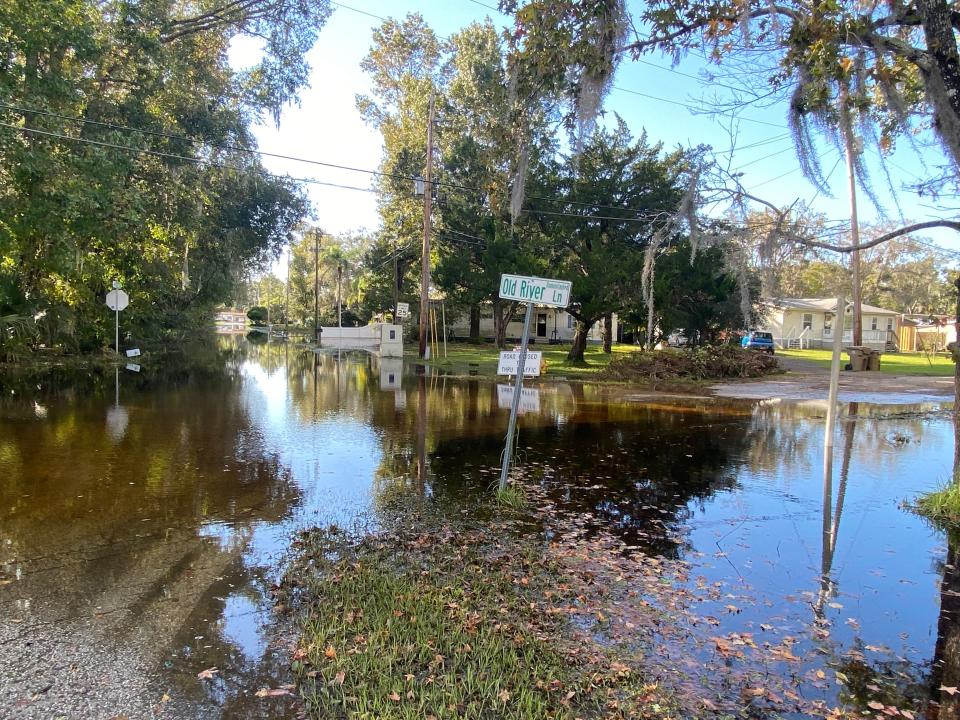Astor back to normal after the storms
ASTOR − It’s been almost five months since Hurricane Ian dumped tons of water, causing the St. Johns River to overflow its banks. Now the streets are dry, docks have popped up from beneath murky water, and people are filling chairs and their stomachs at the Drifters Riverfront Bar and Grill.
The St. Johns reached record flood stage levels during the hurricane. Flood stage is 2.3 feet, and the river rose to 4.71 feet, beating the historic 4.6-foot level recorded in 1933.
It stayed at flood stage until Dec. 26. A month later, the river was at 1.08 feet, or 1.2 feet below flood stage, according to the National Weather Service in Melbourne.
Terms explained: What is a subtropical storm and how is it different from a tropical or extratropical system?
What is storm surge? Explaining a hurricane's deadliest and most destructive threat
Lake County Property Appraiser Carey Baker’s staff listed $4.5 million in storm damage. By comparison, Hurricane Nicole damage a month later was only about $200,000.
“We really looked hard to find that,” he said.

Providing aid to Lake County
The Federal Emergency Management Agency set up assistance centers for people to apply for aid. Overall, the agency approved $1.97 billion in grants loans and flood insurance payments.
FEMA has provided more than $4 million to households in Lake County, according to Johanna Strickland with that agency. That includes $1.8 million in housing assistance and $2.2 million in other needs assistance.
Lake County government will soon be seeking about $12 million in reimbursement for things like debris removal. “That’s a rough estimate,” said county spokeswoman Sarah Lux.
The review process takes months. FEMA must also weigh requests from across the state.
The Small Business Administration distributed $3,076,750 in Lake County. That was part of the overall $1.6 billion overall, according to the agency.
The SBA loan deadline has passed for property damage claims, according to a spokeswoman with that agency, but not for economic impact assistance, the agency said. For further information, applicants can go to disasterloanassistance.sba.gov
All about Hurricane Ian
Ian was a water damage event, rather than high winds. At least 10 families had to be evacuated from their homes in Astor. That’s unusual. Astor residents are accustomed to flooding and rarely call for help.
“They don’t call for nonsense,” a firefighter at the fire station said.
But water damage inside a home is serious business. It can cause mold and rot, and also ruin drywall and furnishings.
There was greater damage in Lake County from Hurricane Irma five years earlier. That storm left 90,000 people without power, forced 4,600 people and 527 pets to take refuge in shelters, and pounded Umatilla, causing heavy wind damage to the Umatilla Inn and serious damage to an RV park.
Hurricane Ian was a Category 4 hurricane when it slammed into southwest Florida on Sept. 28, with 155 mph winds, just shy of a Category 5.
It brought with it an unprecedented storm surge of 12 to 18 feet, according to NOAA’s website. “…Fort Myers itself was hit particularly hard with a 7.26-foot surge — a record high.”
It was downgraded to a tropical storm the next day but dumped massive amounts of rain across the peninsula.
Astor is especially prone to flooding. Water flows north on the St. Johns, so it was hit with a double whammy: flood waters from the south, a backed-up Lake George, and water with nowhere to go in Jacksonville.

The National Oceanic and Atmospheric Administration estimates that 87 people lost their lives in the storm, which also tore into Jamaica and Cuba. About 4 million Floridians lost power and an additional 1.1 million in the Carolinas when the storm swung north.
This article originally appeared on Daily Commercial: Hurricane Ian's effects no longer a problem in rural Astor

